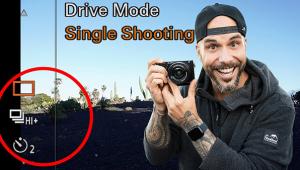Digital Help
Q&A For Digital Photography
| This department will attempt to provide solutions to problems readers may have getting into and using digital cameras, scanning, and using digital photographic images with a computer and different kinds of software. All questions sent to me will be answered with the most appropriate information I can access and provide. However, not all questions and answers will appear in this department. Readers can send questions to me addressed to Shutterbug magazine, through the Shutterbug website, directly via e-mail to: editorial@shutterbug.com or fotografx@mindspring.com or by US Mail to: PO Box 2830, Lompoc, CA 93438. Correction Scanner Choice From
Yet Another Angle A.
I rather liked the Imacon as well, but could not afford even thinking
about it. The competitor of the Nikon 8000 with Digital ICE, which is
also supported by LaserSoft with SilverFast Ai 6, is the Minolta DiMAGE
Scan Multi PRO, which I reviewed last year. At present the Nikon is
selling for $1969 and SilverFast for it is $569; the Minolta Multi PRO
is $2119 and SilverFast for it is $399--about equal. SilverFast
Ai 6 includes profiling for the scanner, and the Ai 6 software is very
effective to profile the scanner and set up color management, whether
it is used as a stand-alone or as a Photoshop plug-in. VHS To Digital And
DVD-R And CD-R Recording A.
I believe the distinctions between DVD-R and DVD+R are chiefly matters
of compatibility and should not affect the actual quality of the media
recorded. I don't really consider myself an expert in these distinctions
so I suggest you might access a website I have found most useful on
disc recording technical matters: www.cdr4less.com. Slide Presentation
Problem For Photos With PowerPoint A.
PowerPoint is not intended for displaying photographic images that may
be created using a camera in either vertical or horizontal orientation.
It is designed as a business graphics presentation media limited to
display either on a computer or projection screen, both of which are
standardized as a landscape (horizontal) image format. Imacon Flextight
Vs. Minolta DiMAGE Scan Elite 5400 A.
I have a high regard for the Imacon Flextight scanners. I believe the
high-resolution version that will provide scans at a similar level to
the Minolta DiMAGE Scan Elite 5400 sells for just under $10,000, while
the $4995 model 343 only has 3200 ppi resolution, a lot less than the
Minolta and less even than the Nikon 4000. How Best To Enlarge
Digital Images? A. I have not used or evaluated the Extensis SmartScale, so comparing it to Genuine Fractals from LizardTech (www.lizardtech.com) seems unfair. I have used Genuine Fractals frequently to make enlarged prints from digital camera image files and have found it is very effective. And, generally the reader consensus I get indicates others are also enjoying good satisfaction with Genuine Fractals. If readers have experience with Extensis' SmartScale we'd like to hear from them. There is also more sophisticated and better software for up-scaling images that is provided with some high-end proprietary drivers for professional wide format printers, but those software packages start at about $500. An All-In-One Photo
Printer Not Reviewed A. The Epson RX500 should provide photo printing performance very similar to the Epson Stylus Photo 900 model I reviewed in the October 2003 issue of Shutterbug, as the printing specifications are the same. The report is available to read on the Shutterbug website at: www.shutterbug.net/test_reports/1003sb_epson/index.html. Standard Digital
Camera File Size/Resolution? A. To
answer your last part first, I would guess that 72dpi was established
with some early digital camera makers because the first low-resolution
cameras were used mostly to make pictures for the web, and 72dpi is
VGA screen resolution. |
- Log in or register to post comments


































